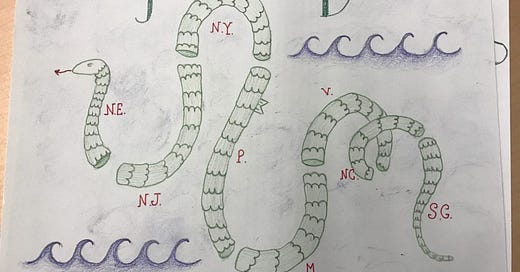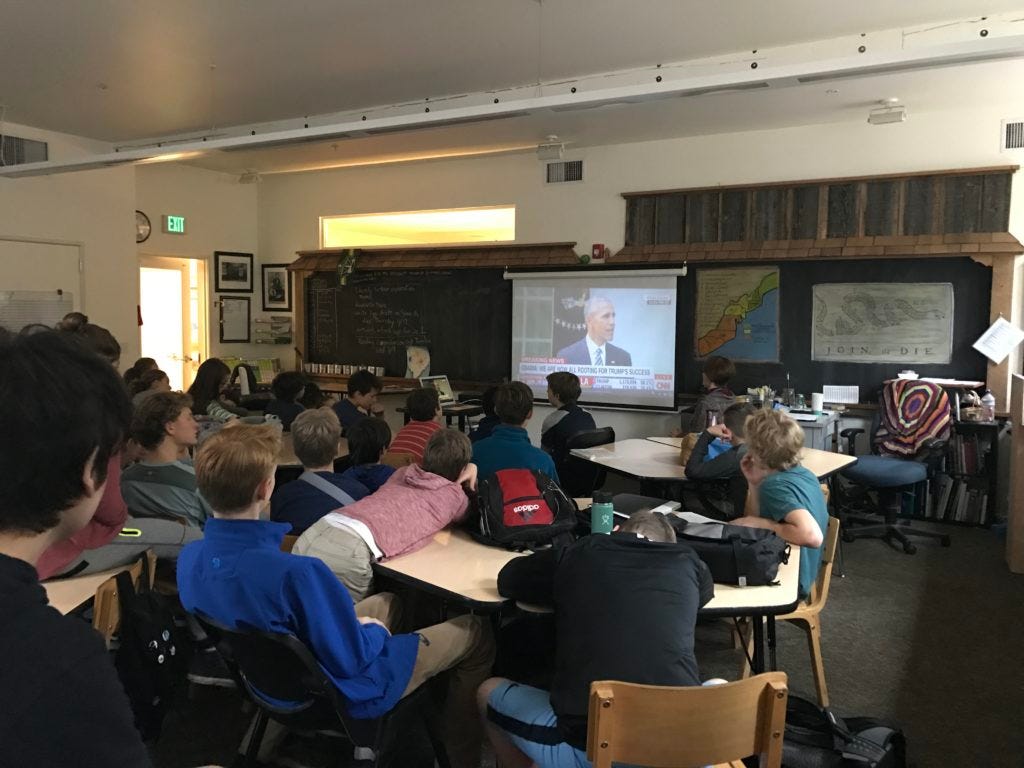If you’re teaching 8th grade next year, this post is a must-read—one of the best projects I ever did with students. And if you’re not the 8th-grade teacher next year, forward this to whoever is!
I’ve had the good fortune to be teaching 8th grade during two pretty significant elections. First, it was when Obama was elected in 2008 (yes, my teaching career goes back that far) and then the Clinton-Trump election in 2016. I wrote a blog post about that experience—it was a doozy.
During the election years, when I wasn’t teaching 8th grade, I found it really challenging to manage all of the political talk among the students. It’s not really age-appropriate for them to dive into the issues, but that’s what the whole world is doing during an election, so even first graders do their best to play along. Ultimately, they mimic what they hear around them, and I always found it difficult to manage the big conversations and emotions that can result.
Eighth grade is the one year when that wasn’t an issue. They were ready to dive into and get passionate about the issues. We had great conversations about how to take the big feelings you were having and turn them into action. My Class of 2017 kids organized a dress code protest and attended political demonstrations in the community with their parents. It was pretty inspiring.
Lessons from Elections
There’s so much content to cover in 8th grade that I got thinking about how to leverage their interest in the election to get through more lesson content. I ultimately settled on an Election Debate project. Students paired up and chose a presidential debate to study and then present in a mock debate at an evening event. I gathered a list of election contests that I thought would be interesting—either because of the issues involved or the circumstances surrounding the election or the debate (I remember that the Kennedy-Nixon first televised debate was one of them).
I’m recalling now that there was some pretty stiff topic competition with a few student teams wanting to study the same election. I told them that I would assign their picks starting the next day and I’d give any contested choices to the team that had done the most preliminary research. Some of those go-getters came to school the next day with stacks of library books, internet printouts, and pages of notes. Funny kids.
This was one of the most successful projects I’ve ever done. Here are some of the reasons why.
We covered a wide range of American history. There were students who studied the Adams-Jefferson election of 1796, and others who learned about Bush-Gore in 2000. We recognized that more recent elections (that had been televised) were easier, but that didn’t stop kids from taking on the challenge of a more interesting election.
They got to see how debates have changed over the years. Given the mud-slinging that happens in more recent debates, I really wanted them to see how civil debates were, even just a few years ago.
It involved the perfect blend of research, drama, and the 8th-grade pedagogical theme. Eighth graders are driven by political revolution and it comes up everywhere in the curriculum. It was fascinating to watch their political values light up about issues that were relevant in 1860.
They got to try out debate. Our local high schools have great speech and debate programs, and this project was a perfect lead-in for them to try it out.
All this to say, those kids dove into this project with both feet, and it was really inspiring. If you’re a paid subscriber, you can download the assignment sheet for this project by clicking below.
Keep reading with a 7-day free trial
Subscribe to Waldorf at Work to keep reading this post and get 7 days of free access to the full post archives.






